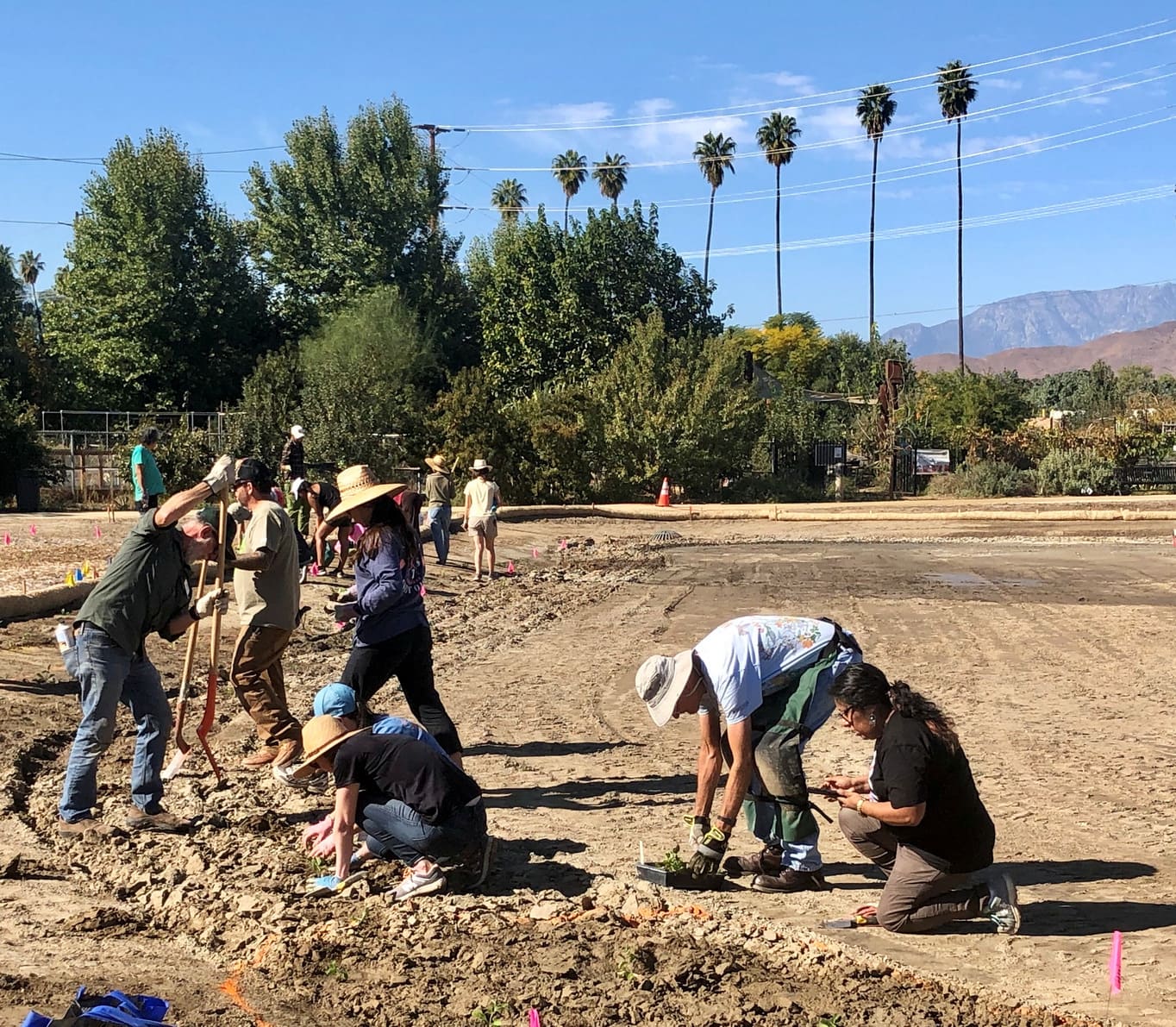
Interview with Angela Laws / The Xerces
In the interview with Angela Laws / The Xerces society, she talks to us about the importance of creating a habitat for pollinators.
Endangered Species Conservation Biologist, based in Sacramento, CA. Angela is working on habitat restoration for pollinators and monarch butterflies in the Central Valley. Her role at The Xerces Society also involves incorporating climate resiliency into pollinator restoration projects.
She has over 20 years of experience studying arthropods in grassland habitats, including studies of how climate change can affect species interactions. She received a M.S. in Ecology from Utah State University, and a Ph.D. in Biology from the University of Notre Dame.

A monarch butterfly feeding on milkweed.
Photography: Eric Laws
WHAT EXPERIENCE OR PERSON DO YOU THINK CONTRIBUTED TO THE LOVE AND DEDICATION THAT ARISES IN YOU REGARDING HABITAT RESTORATION?
When I was young, my parents often took us camping in different places. I loved spending time outside, looking for wildlife and enjoying the peace of being in nature. I think my love for nature and my commitment to environmental issues was born on those frequent camping trips.
As an undergraduate student I had the opportunity to work on a field experiment with grasshoppers, and I was hooked! I discovered that I love insects and ended up spending almost 20 years studying insects and spiders in grasslands around the United States. I really enjoyed my time as a researcher, but I wanted to do more hands-on conservation work. This is what led me to my current job with The Xerces Society almost 6 years ago.

Sweaty green bee.
Photography: Sara Morris
WHAT IS THE IMPORTANCE OF DESIGNING AND IMPLEMENTING POLLINATOR GARDENS?
Pollinators are an important part of most ecosystems. Over 85% of flowering plants require a pollinator, usually an insect, for reproduction. Because of this, pollinators are important to our agriculture, health, economy, and to the environment. So many of the foods we eat rely on insect pollinators.
There are several types of insect pollinators, including bees, butterflies, moths, wasps, beetles, and flies. Of these groups, bees are the most efficient. They collect pollen to feed their young and have special hairs or other structures on their bodies to carry pollen. Bees are a very diverse group of animals, with over 20,000 species globally.
Many pollinators, including many species of bees and butterflies, have been declining in recent years. Common threats to pollinators include habitat loss, pesticide use, climate change, and diseases spreading from managed bee hives. Creating highquality pollinator habitat that is protected from pesticides can help address two of these threats.

Volunteers planting pollinator habitat.
Photography: Diana Ruiz/Riverside Corona RCD
WHAT ACTIONS CAN WE DO TO RESTORE A HABITAT AND ATTRACT POLLINATORS?
Creating pollinator habitat is a rewarding experience that can be done in large or small areas. The most important aspects of pollinator habitat are flowers, which provide pollen and nectar. Native plants tend to support more pollinators than ornamental plants.
Butterflies need host plants, which are the plants the butterflies feed on as caterpillars. Many butterflies are very specific about the host plants that they use. For example, monarch butterflies only use milkweeds.

Roadside Pollinator Habitat.
Photography: Nancy Lee Adamson/The Xerces Society
When designing habitat for pollinators, diversity is key. Pollinators come in many shapes and sizes, so using a variety of plants with flowers of different colors, shapes and sizes will support more species of pollinators than a habitat with only a few species. Try to make sure you have at least three different species in bloom at all times when pollinators may be active.
Pollinators also seem to respond well to flowers when they are planted in masses, rather than spread apart. Another important aspect of creating a pollinator habitat is to make sure to protect it from pesticides. Many of the insecticides that are available are harmful to bees and other pollinators. The Xerces Society has guidance available for protecting habitat from pesticides.
“Roadsides represent an excellent opportunity to add pollinator habitat to the landscape. Because of the linear nature of roads, roadside habitat is great for increasing connectivity between patches of high-quality habitat.”

Monarch caterpillar on milkweed.
Photography: Nancy Lee Adamson/The Xerces Society
IN YOUR EXPERIENCE, WHAT ARE THE BENEFITS OF PLANTING NATIVE SPECIES ON THE ROADSIDES?
Roadsides represent an excellent opportunity to add pollinator habitat to the landscape, especially in highly developed landscapes. Roadsides can provide a good habitat for pollinators when the habitat contains a variety of native plants that provide food, nesting sites, and places to overwinter.
In some areas that are highly developed or dominated by agriculture, roadsides can become some of the only natural habitat available to pollinators. An additional advantage is that, because of the linear nature of roads, roadside habitat is great for increasing connectivity between patches of high-quality habitat.
Creating a pollinator habitat along roadsides has many benefits beyond pollinator conservation. It can help with carbon sequestration, erosion control and can even reduce runoff, which can help prevent flooding.

Bumble bee collecting pollen.
Photography: Sara Morris











